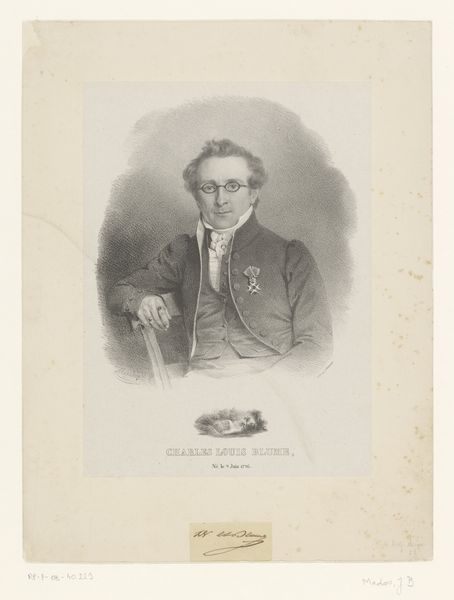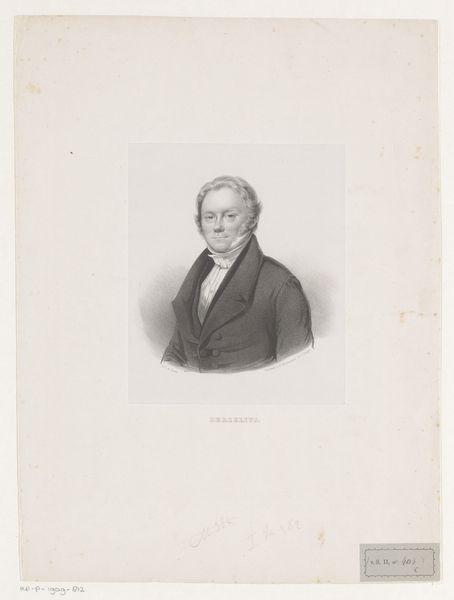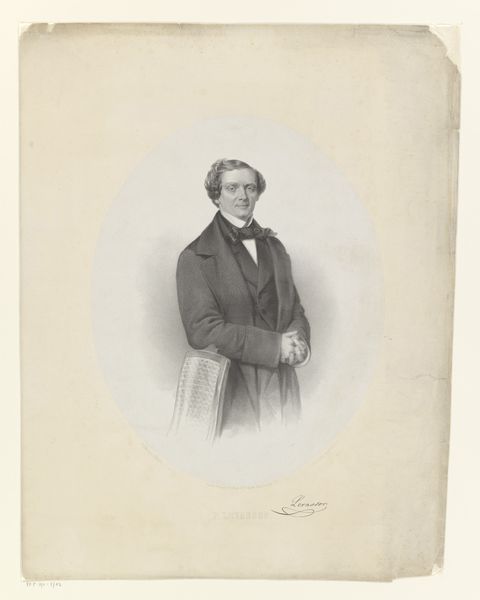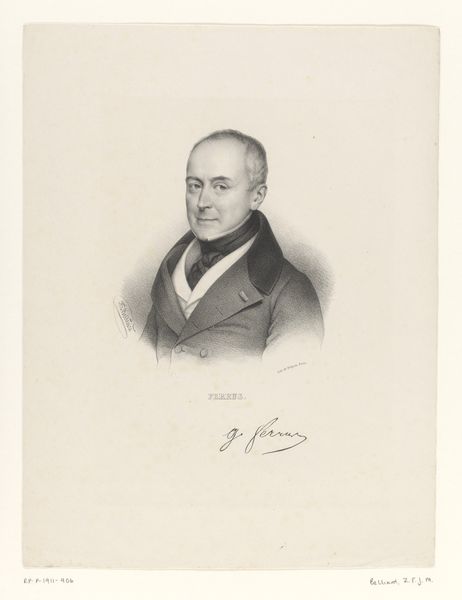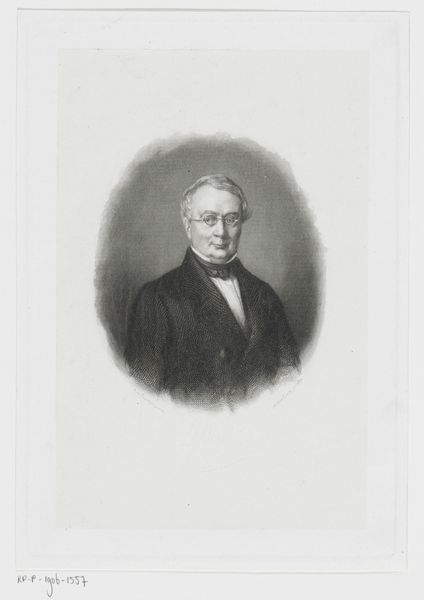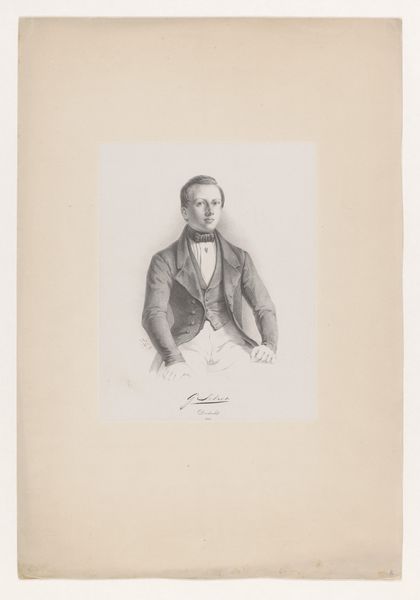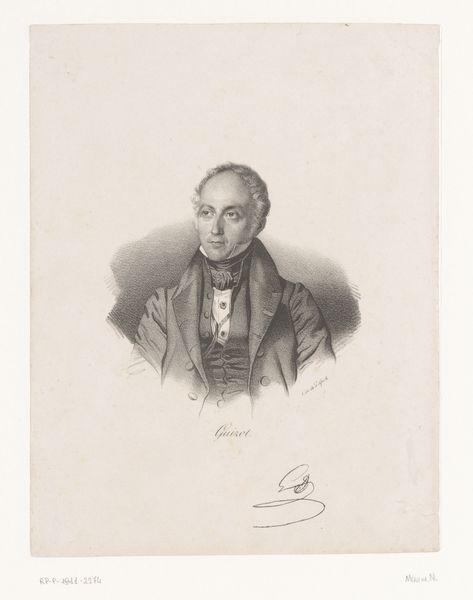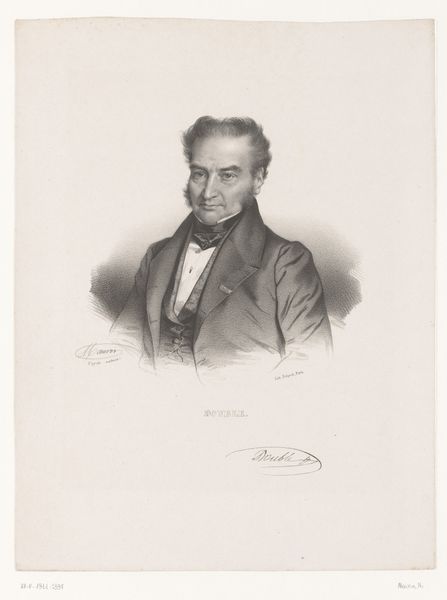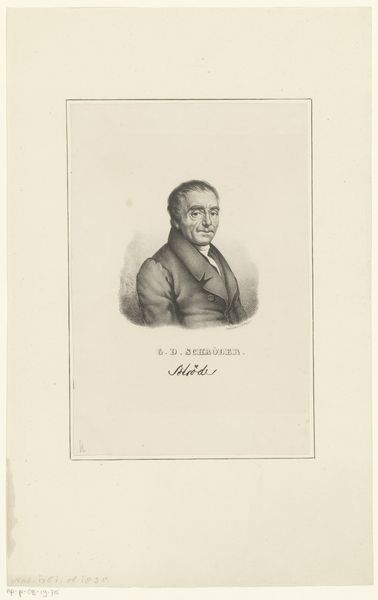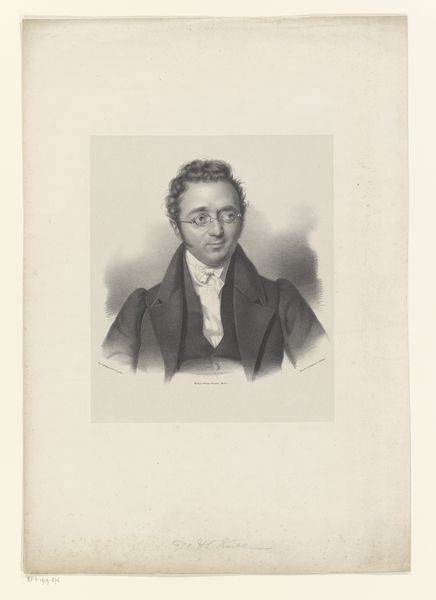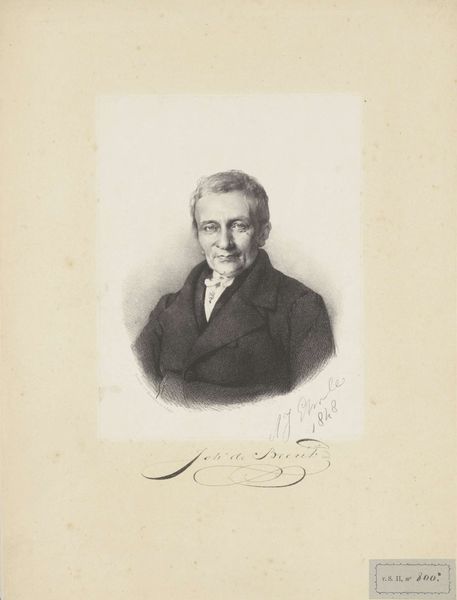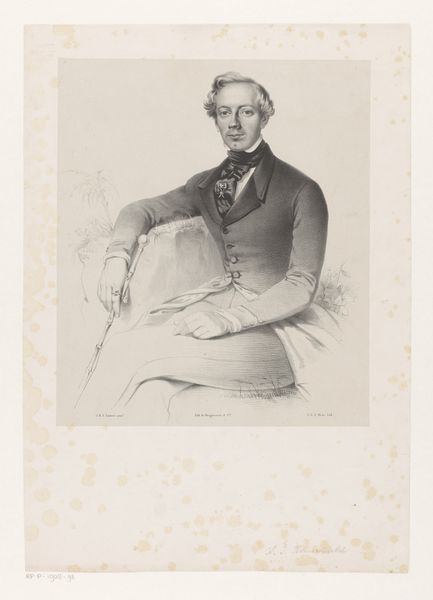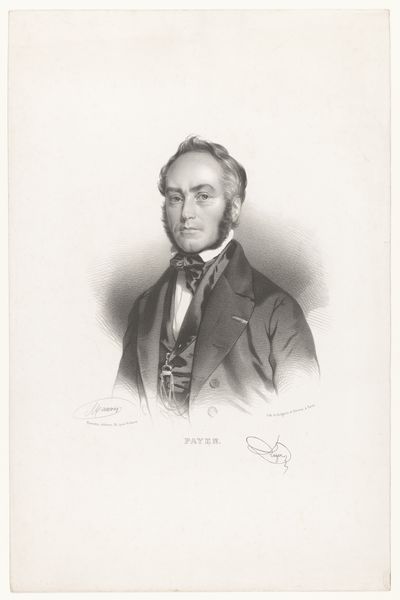
Dimensions: height 203 mm, width 117 mm
Copyright: Rijks Museum: Open Domain
Curator: Looking at this, my initial feeling is one of slight melancholy, maybe even a touch of weary resignation in his gaze. It’s compelling. Editor: Here we have a print, specifically an engraving, from between 1820 and 1858, created by Franz Xaver Stöber. It’s housed right here at the Rijksmuseum, and the piece is titled 'Portret van Ignaz Franz Castelli'. Curator: Stöber really captured something here. His face, so meticulously rendered… Those glasses, the tight cravat...He looks like someone trapped between romantic ideals and bourgeois responsibilities, doesn't he? And I’d bet Castelli, whoever he was, had a really sharp wit and was maybe just a little bit tired of people not getting the joke. Editor: Ignaz Franz Castelli was indeed a well-known Austrian playwright. Analyzing this portrait through the lens of performativity allows us to interpret the intentional construction of identity. His carefully chosen attire, the almost theatrical lighting... they all hint at his role in shaping public perception and navigating Vienna’s societal currents during that time. I wonder what meanings might be inferred from his perceived “weariness.” Curator: Interesting, considering his profession! To me, that shadow under his eye says "late nights penning comedies, critiquing emperors." Perhaps there's something about Romanticism itself -- the period aestheticizing emotions of heightened intensity—that feels like an act, you know? Editor: Yes, that's definitely there, it could be argued that portraits like this became central to establishing the identities of people and, therefore, the period—and it has its drawbacks too! We see in art how romanticizing figures can contribute to masking power dynamics within systems. Curator: Which leads to all sorts of delicious subversive interpretations of Castelli’s portrait here. What do you make of the signature that runs across the bottom of the print? That ornate curlicue makes it read as something between official and irreverent. Editor: Well, seeing as it's right at the bottom I think it could simply be taken as the artist making his mark—he's literally underlining his artistry. Curator: In this light, exploring his context and identity has given me an unexpected peek into an artist’s sensibility through an unexpected lens. Editor: Indeed! Understanding this portrayal enriches our comprehension of how a man like Castelli could actively engage with, subvert, or potentially endorse the political dynamics inherent in representation.
Comments
No comments
Be the first to comment and join the conversation on the ultimate creative platform.
